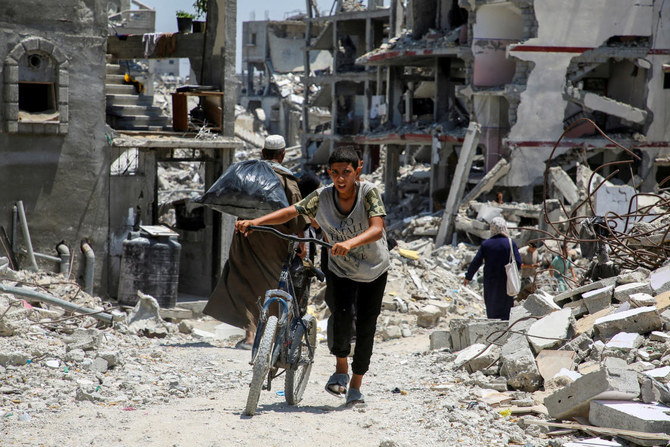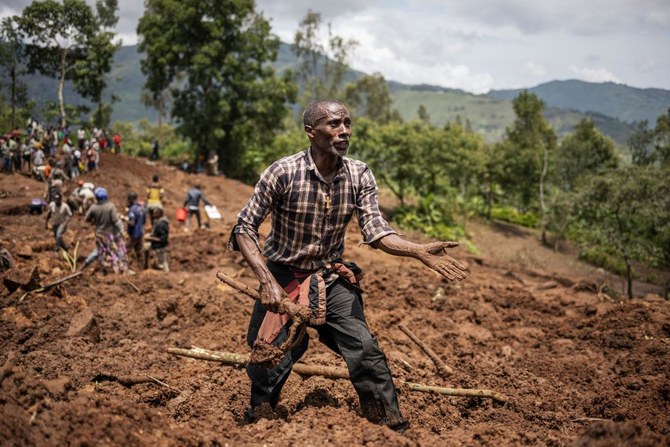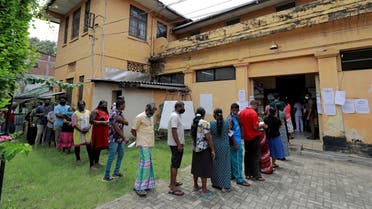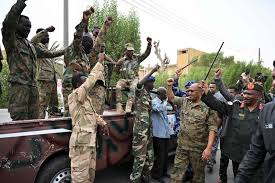Monitoring Desk
KABUL: The Taliban captured a provincial capital near Kabul on Thursday, the 10th the insurgents have taken over a weeklong blitz across Afghanistan as the U.S. and NATO prepare to withdraw entirely from the country after decades of war.
The militants raised their white flags imprinted with a famous Islamic proclamation of faith over the city of Ghazni, just 130 kilometers (80 miles) southwest of Kabul. Sporadic fighting continued at an intelligence base and an army installation outside the city, two local officials told The Associated Press.
The Taliban published videos and images online showing them in Ghazni, the capital of Ghazni province.
Afghan security forces and the government have not responded to repeated requests for comment over the days of fighting. However, President Ashraf Ghani is trying to rally a counteroffensive relying on his country’s special forces, the militias of warlords and American airpower ahead of the U.S. and NATO withdrawal at the end of the month.
While the capital of Kabul itself has not been directly threatened in the advance, the stunning speed of the offensive raises questions of how long the Afghan government can maintain control of the slivers of the country it has left. The government may eventually be forced to pull back to defend the capital and just a few other cities as thousands displaced by the fighting fled to Kabul and now live in open fields and parks.

Ghazni provincial council member Amanullah Kamrani told the AP the two bases outside of the city remain held by government forces. Mohammad Arif Rahmani, a lawmaker from Ghazni, similarly said the city had collapsed to the insurgents.
Kamrani alleged that Ghazni’s provincial governor and police chief made a deal with the Taliban to flee after their surrender. Taliban video and photos purported to show the governor’s convoy passing by Taliban fighters unstopped as part of the deal. The two officials could not be immediately reached for comment.
The loss of Ghazni marks yet another strategic setback for Afghan government forces. Ghazni sits along the Kabul-Kandahar Highway, a major road that connects the Afghan capital to the country’s southern provinces. That could complicate resupply and movement for government forces, as well as squeeze the capital from the south.
Already, the Taliban’s weeklong bliz has seen the militants seize nine other provincial capitals around the country. Many are in the country’s northeast corner, pressuring Kabul from that direction as well.
Fighting meanwhile raged in Lashkar Gah, one of Afghanistan’s largest cities in the Taliban heartland of Helmand province, where surrounded government forces hoped to hold onto that provincial capital.
On Wednesday, a suicide car bombing marked the latest wave to target the capital’s regional police headquarters. By Thursday, the Taliban had taken the building, with some police officers surrendering to the militants and others retreating to the nearby governor’s office that’s still held by government forces, said Nasima Niazi, a lawmaker from Helmand.
Niazi said she believed the Taliban attack killed and wounded security force members, but she had no casualty breakdown. Another suicide car bombing targeted the provincial prison, but the government still held it, she said. The Taliban’s other advances have seen the militants free hundreds of its members over the last week, bolstering their ranks while seizing American-supplied weapons and vehicles.
Niazi criticized ongoing airstrikes targeting the area, saying civilians likely had been wounded and killed.
“The Taliban used civilian houses to protect themselves, and the government, without paying any attention to civilians, carried out airstrikes,” she said.
With the Afghan air power limited and in disarray, the U.S. Air Force is believed to be carrying out some series of strikes to support Afghan forces. Aviation tracking data suggested U.S. Air Force B-52 bombers, F-15 fighter jets, drones and other aircraft were involved in the fighting overnight across the country, according to Australia-based security firm The Cavell Group.
It’s unclear what casualties the U.S. bombing campaign has caused. The U.S. Air Force’s Central Command, based in Qatar, did not immediately respond to a request for comment Thursday.
The success of the Taliban offensive also calls into question whether they would ever rejoin long-stalled peace talks in Qatar aimed at moving Afghanistan toward an inclusive interim administration as the West hoped. Instead, the Taliban could come to power by force — or the country could splinter into factional fighting like it did after the Soviet withdrawal in 1989.

In Doha, U.S. envoy Zalmay Khalilzad has met with diplomats from China, Pakistan and Russia in an effort to as a group warn the Taliban they could again be considered international pariahs if they continue their offensive, State Department spokesman Ned Price said. Khalilzad also plans to meet with Afghan government and Taliban officials as the fighting goes on without a sign of it abating.
In Germany, Foreign Minister Heiko Maas warned the Taliban to not establish a caliphate in Afghanistan. Maas told German public TV ZDF that if the Taliban did so the country would no longer receive “a cent” of development aid from Germany, which is currently estimated to be around 430 million euros ($504 million) annually.
The multiple battle fronts have stretched the government’s special operations forces — while regular troops have often fled the battlefield — and the violence has pushed thousands of civilians to seek safety in the capital.
The latest U.S. military intelligence assessment is that Kabul could come under insurgent pressure within 30 days and that if current trends hold, the Taliban could gain full control of the country within a couple of months.
Courtesy: AP News






